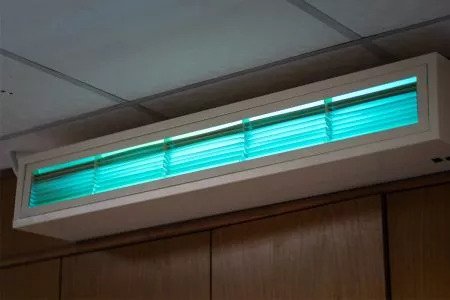Learn How UV Light Curing Improves Your Process
UV light curing is the process of altering the properties of polymers, or photopolymers which refers to polymers that undergo changes to their molecular structure when exposed to light. UV light emits invisible electromagnetic radiation, causing a change in properties to photopolymers. UV light will cause a photopolymer, which are a wide variety of resins, to instantly dry, harden or seal with an unbreakable bond.
UV light is used in many curing processes worldwide by industrial, commercial and government manufacturing and production companies to improve their process. By exposing their manufactured polymer products to UV radiation, they can instantly dry ink on parts and strengthen surfaces without using harmful chemicals or solvents. Some examples of processes that benefit from UV curing include:
Instantly drying of inks, lacquers and varnishes
Creating an improved adhesive bond
Enhancing decorative glazes
Drying outer surface coatings
Improving graphic designs
Screen printing
Disinfecting of surfaces, air, and water
Disinfecting medical equipment
This is only a short list of the multitude of benefits realized by UV curing. As more and more businesses realize the many benefits of curing with UV radiation, there will continue to be an increase in companies adopting this superior curing method in their processes.
Types of UV Light Curing Lamps
The three basic types of lamps used in UV curing processes are:
Low-Pressure Amalgam Lamps
Medium-pressure UV (MPUV) Lamps
High-Pressure UV (HPUV) Lamps
Low pressure amalgam lamps are typically used for polymer curing, although they can also be highly effective in germicidal applications. Medium Pressure lamps are effective in germicidal applications and are typically used for air, water, and surface disinfection, while high pressure lamps are typically used to alter the properties of photopolymers in many UV curing processes.
Benefits of UV Light Curing
There are a multitude of benefits to using UV lights for curing, some of the most important would be efficiency, consistency and safety.
Efficiency
There is no other method that is quite as efficient at curing products as using UV light. Depending on your operation, you could utilize specific UV light curing machines for your process or use more of a conveyor type of UV curing station to instantly treat numerous parts, without even touching them. Imagine the time, money and labor you save by having an instant curing process occurring simply while your parts are being transported from one station to another such as quality inspection or shipping. The alternative methods such as drying or using solvents are less desirable due to several factors. Force drying or air-drying products leaves them susceptible to inconsistencies with evaporation and possible contamination, and takes more time than an instant UV cure. In manufacturing, time is money, and anytime you can improve your cycle time with a higher level of quality, it is evident which method is preferred. UV light curing dramatically improves throughput and cycle times, with less costs than additional labor and purchasing chemicals which could be harmful to employees and the environment.
Consistency
Consistency is key to producing high quality products. UV curing produces a consistent process with an even amount of UV exposure applied to parts and products, whereas employees applying a chemical spray for an outer coating can produce inconsistencies in the finished product. Allowing parts to air dry also leaves room for an inconsistent finished surface due to evaporation. As all quality minded OEM’s are aware, consistency increases the quality of products in all processes.
Safety and Health of Employees
While efficiency and consistency are top considerations for any production process, the safety and health of your workforce is also a top consideration. With UV curing there is no emission of harmful pollutants and chemicals in the air, and no need to purchase or store hazardous materials and maintain material safety data sheets on such materials. Using ultraviolet radiation is effective on photopolymers, and safe to the environment and your workforce. With all these benefits, it is no wonder that OEMs, quality and production managers are realizing the value of ultraviolet radiation to enhance their production processes. Cost efficient and consistent processes dramatically increase throughput and profitability. Combined with health and safety practices UV curing is the most desirable of processes used to cure product surfaces.
LightSources Leads the Industry in UV Light Curing Lamps
LightSources and our European partner, LightTech, lead the industry with high quality UV lamps and custom designed solutions. As an ISO registered lighting specialist, we understand the importance of high-quality product, delivered on time. LightSources goes above and beyond any other lighting supplier with knowledgeable engineers ready to provide custom designs and prototypes with the right lamp for your process. We can develop lighting solutions to be installed vertically or horizontally, while maintaining effectiveness. Our lamps are proven to maintain effectiveness longer than other comparable types.
LightSources and our valued partner companies represent the leading high-tech lighting specialists and lamp designers in the industry today. Our products are used in a multitude of industries and applications worldwide. We offer OEM oriented and patent protected lighting solutions. We invite you to contact us to learn more about our wide selection of UV light curing lamps.



















